|
World Stars of Ballet and a Japanese Boy (No.49)
11 April 2014
According to the global think tank ranking released the other day by the University of Pennsylvania, no less than 5 research institutes in Belgium are ranked in the top 100 to my surprise. The Japan Institute of International Affairs (JIIA) was ranked 13th implying a high international evaluation. However, the only other Japanese institute is the Asian Development Bank Institute, ranked 29th, which is not a very good result. Although this ranking is researched and released by only one American university, it covers more than 6.800 think tanks all over the world and evaluates them in cooperation with more than 200 influential researchers and specialists, which makes it a very reliable ranking internationally as well. I recently visited the Bruegel Institute (ranked 6th globally) and the International Crisis Group (ICG: ranked 16th) where I learned about the current state of research activities from their respective directors. The Bruegel Institute features future-oriented research, selecting themes ahead of its time and the ICG is characterized by its research methodology of being present locally in close contact with the study objects. All research findings are published on the internet, accessible to everyone, which shows their confidence. By the way, except for these two think thanks, three other Belgian think tanks, the Centre for European Policy Studies (CEPS: ranked 23rd), the Centre for European Studies (CES: ranked 35th) and the European Centre for International Political Economy (ECIPE: ranked 75th) are ranked in the top 100. The Royal Institute for International Relations (commonly known as the Egmont Institute), a research institute affiliated to the Belgian Ministry of Foreign Affairs, where I attend seminars from time to time, is ranked 113th in the world. Number 1 in the world is the Brookings Institute in the US and Chatham House in the UK is ranked 2nd.
< Les Ateliers de la Meuse, a Cutting-Edge Company in Belgium >
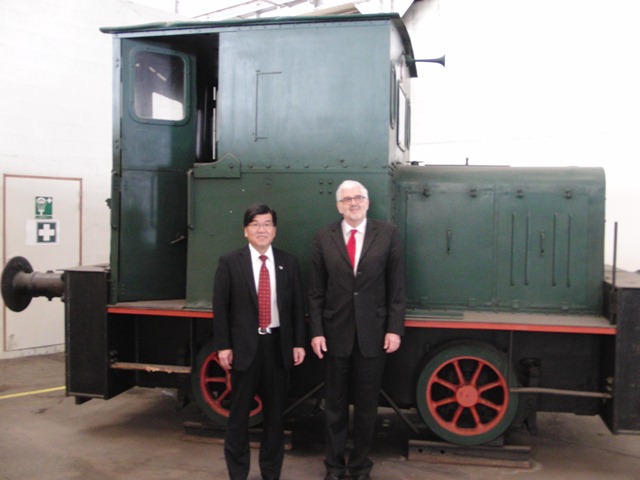 Last week, I visited an interesting company called “Ateliers de la Meuse” on the edge of Liège (100km east of Brussels; 193.000 inhabitants). What triggered my visit was the way a Belgian businessman introduced it to me as a company that “existed for 500 years, changed its business scope constantly to keep up with the times and is still around today as a cutting-edge industry”. Although the company seemed to be perplexed by my sudden request for a visit, Managing Director Bill Collin welcomed me warmly. I was shown around the ‘Sclessin factory’ (80 employees), one of the company’s two factories, where simulators for spatial experiments and storage devices for nuclear waste are manufactured. At the other factory (80 employees as well), large astronomical telescopes and radioactive medical equipment are produced. Last week, I visited an interesting company called “Ateliers de la Meuse” on the edge of Liège (100km east of Brussels; 193.000 inhabitants). What triggered my visit was the way a Belgian businessman introduced it to me as a company that “existed for 500 years, changed its business scope constantly to keep up with the times and is still around today as a cutting-edge industry”. Although the company seemed to be perplexed by my sudden request for a visit, Managing Director Bill Collin welcomed me warmly. I was shown around the ‘Sclessin factory’ (80 employees), one of the company’s two factories, where simulators for spatial experiments and storage devices for nuclear waste are manufactured. At the other factory (80 employees as well), large astronomical telescopes and radioactive medical equipment are produced.
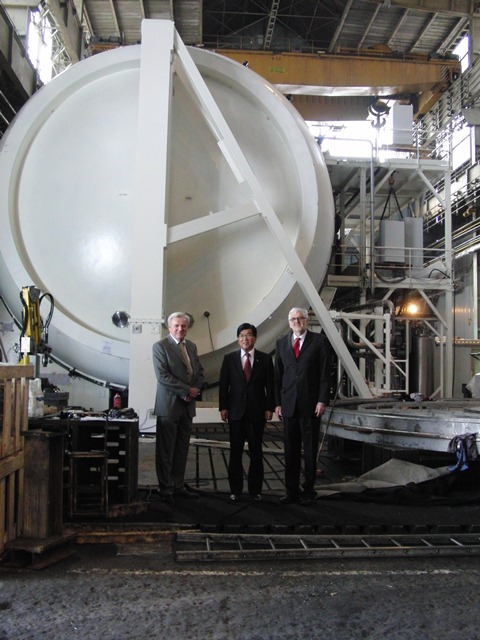 This company originates in the 16th century from a factory manufacturing windmills for grinding wheat, but jumping on the trend of the industrial revolution in the 19th century, it transformed itself into a company manufacturing locomotives. In its heyday, it had grown into a large company of 1200 employees. The locomotives made in those days are still on display in the Sclessin factory today. Around the 20th century however, when the heavy industry was in decline, a shift to the nuclear and space industry took place, yet another major change. Nevertheless, the company faced various difficulties and became a semi-public enterprise in 1981 through capital participation of the Walloon regional government. Thereafter, in 1983, they acquired a glass polishing company, which was a spin-off of the University of Liège, and started the production of astronomical telescopes. By the acquisition of the nuclear division of Arcelor-Mittal in 2007, ‘Les Ateliers de la Meuse’ expanded its business as a leading company in the field. They also have a cooperation track record with the National Space Development Agency of Japan and ITER (International Fusion Energy Organization). The simulator for spatial experiments I was shown is a huge cylinder of steel with a diameter of 9m and a length of 12m. It is an extraordinary product in which the ultra-low temperature and zero gravity of outer space can be reproduced. On this day I realized that, surprisingly, a small and medium business is supporting this modern state-of-the-art industry. This company originates in the 16th century from a factory manufacturing windmills for grinding wheat, but jumping on the trend of the industrial revolution in the 19th century, it transformed itself into a company manufacturing locomotives. In its heyday, it had grown into a large company of 1200 employees. The locomotives made in those days are still on display in the Sclessin factory today. Around the 20th century however, when the heavy industry was in decline, a shift to the nuclear and space industry took place, yet another major change. Nevertheless, the company faced various difficulties and became a semi-public enterprise in 1981 through capital participation of the Walloon regional government. Thereafter, in 1983, they acquired a glass polishing company, which was a spin-off of the University of Liège, and started the production of astronomical telescopes. By the acquisition of the nuclear division of Arcelor-Mittal in 2007, ‘Les Ateliers de la Meuse’ expanded its business as a leading company in the field. They also have a cooperation track record with the National Space Development Agency of Japan and ITER (International Fusion Energy Organization). The simulator for spatial experiments I was shown is a huge cylinder of steel with a diameter of 9m and a length of 12m. It is an extraordinary product in which the ultra-low temperature and zero gravity of outer space can be reproduced. On this day I realized that, surprisingly, a small and medium business is supporting this modern state-of-the-art industry.
< Encouragement Party for Japanese Students at the Ambassador’s Residence >
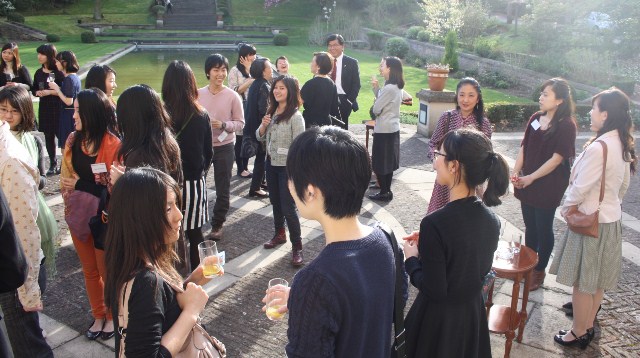 Last week as well, I invited nearly 60 Japanese students studying at Belgian universities and professional schools to an ‘encouragement party’ at my residence. It was the second time since last year to hold this party, but for most of the students it was the first time to participate because in the case of Belgium there are many exchange students that come to study for a period of one year (See Ambassador’s Chat No. 13). Once again, two students learning the violin and piano at the Conservatory of Brussels gave a performance. Last week as well, I invited nearly 60 Japanese students studying at Belgian universities and professional schools to an ‘encouragement party’ at my residence. It was the second time since last year to hold this party, but for most of the students it was the first time to participate because in the case of Belgium there are many exchange students that come to study for a period of one year (See Ambassador’s Chat No. 13). Once again, two students learning the violin and piano at the Conservatory of Brussels gave a performance. 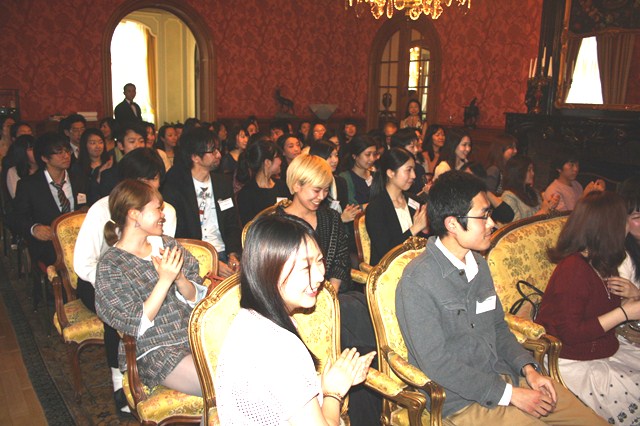 Belgium created a good environment to study classical music: not only students from Brussels, but also those from music schools in Ghent and Mons attended the party. When I visited the Royal Academy of Arts in Antwerp the other day I learned that there were Japanese students too and that’s why six students studying fashion design at this Academy attended the party for the first time (See Ambassador’s Chat No. 44). Most of the students met each other for the first time, but chatted until late at night while enjoying Japanese food and felt sorry to say goodbye to each other. Well, it is said that young people in Japan these days are ‘introverted’ and that the number of students studying abroad has decreased significantly, so for me as Ambassador stationed in Belgium, it is very pleasant that these students chose small Belgium above large European countries or America. Belgium created a good environment to study classical music: not only students from Brussels, but also those from music schools in Ghent and Mons attended the party. When I visited the Royal Academy of Arts in Antwerp the other day I learned that there were Japanese students too and that’s why six students studying fashion design at this Academy attended the party for the first time (See Ambassador’s Chat No. 44). Most of the students met each other for the first time, but chatted until late at night while enjoying Japanese food and felt sorry to say goodbye to each other. Well, it is said that young people in Japan these days are ‘introverted’ and that the number of students studying abroad has decreased significantly, so for me as Ambassador stationed in Belgium, it is very pleasant that these students chose small Belgium above large European countries or America.
< Lecture at the University of Mons >
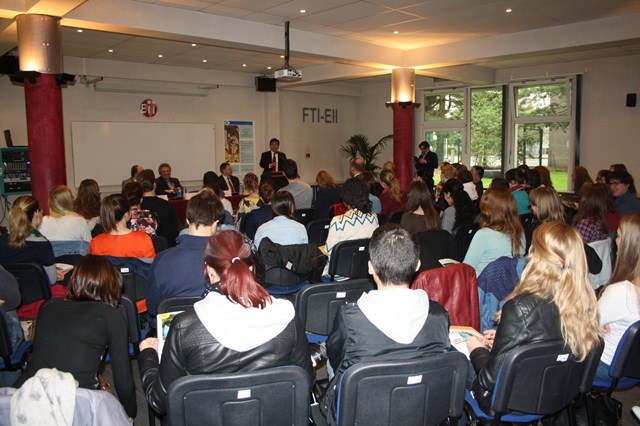 Last week I visited the University of Mons for the first time to give a lecture of about one hour in French before some 100 students. Subject of my lecture was “The Present and Future of Japan”. I talked about the challenge of an aging population combined with a declining birth rate that Japanese society is facing and about Japan’s energy policy after the Fukushima nuclear accident, while making comparisons with Belgium. On the day of my lecture, Rector Calogero Conti, Vice-rector Pierre Dehombreux and other academics were present as well. It was the 7th time for me to visit Mons (67km to the south-west of Brussels; 92.000 inhabitants). I started my lecture by introducing the young Jesuit, Father Lambert Trouvé, who visited Japan in the early 17th century for the purpose of Christian missionary work and who was born in a small village called Ham-sur-heure in the Province of Hainaut, close to Mons. I told them that every time I come to Mons, I think about the young Lambert, martyred in Japan 400 years ago. He is considered to be the first person in history to have visited Japan from Wallonia in Belgium. Last week I visited the University of Mons for the first time to give a lecture of about one hour in French before some 100 students. Subject of my lecture was “The Present and Future of Japan”. I talked about the challenge of an aging population combined with a declining birth rate that Japanese society is facing and about Japan’s energy policy after the Fukushima nuclear accident, while making comparisons with Belgium. On the day of my lecture, Rector Calogero Conti, Vice-rector Pierre Dehombreux and other academics were present as well. It was the 7th time for me to visit Mons (67km to the south-west of Brussels; 92.000 inhabitants). I started my lecture by introducing the young Jesuit, Father Lambert Trouvé, who visited Japan in the early 17th century for the purpose of Christian missionary work and who was born in a small village called Ham-sur-heure in the Province of Hainaut, close to Mons. I told them that every time I come to Mons, I think about the young Lambert, martyred in Japan 400 years ago. He is considered to be the first person in history to have visited Japan from Wallonia in Belgium.
The University of Mons is small university with 7 faculties and about 7000 students, but it is the only university in Belgium with a ‘Faculty of Translation and Interpretation’, and as a third language also Japanese can be chosen. It was the Faculty of Translation and Interpretation that organised my lecture. There do not seem to be any Japanese students, but they do have an exchange relationship with the Kyoto University of Foreign Studies. According to Rector Conti, one more characteristic of the University of Mons is the advanced research in the field of material engineering. He expressed the hope of industry-university cooperation with Japanese companies as well.
< Kyoto University and VUB >
Last month I invited Professor Masahiro Hiraoka of Kyoto University, a promoter of academic exchange in the field of radiation oncology and image-applied therapy, and some professors of the Vrije Universiteit Brussel (VUB) to my residence and had the opportunity to inquire about the actual exchanges. The academic exchange between both universities was sparked by the cooperative relations of the medical equipment manufacturers in Japan and Germany, to which each university is affiliated. I was explained that whereas Japan’s strong point is the development of medical equipment, the so-called hard aspect, Belgium is slightly more superior in the systemization of such devices for an effective treatment, the so-called soft aspect, which makes it a mutually complementary relationship. Vice-rector Cornelis, whom I met when I visited the VUB previously, also attended this informal meeting (See Ambassador’s Chat No.41). He told us that although some exchange activities are carried out with Japan as is the case with Kyoto University, the relations with China are overwhelmingly more active. Between universities in Europe and the United States compatibility of study credits is enhanced and agreements for mutual recognition of degrees are concluded. If Japan as well does not proceed in the same direction, Japanese universities might become more and more “secluded”. The language barrier seems not to be the only problem.
< World Stars of Ballet and a Japanese Boy >
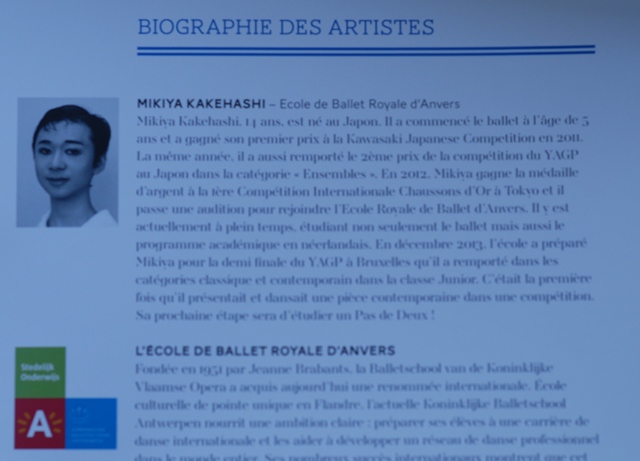 The end of last month, a ballet event called “The Night of Stars” was held in a theatre in Brussels. International top stars of ballet from countries such as the United States, Russia and the United Kingdom got together to present one after the other a classical and contemporary repertoire. Feeling exactly like a “dream contest”, it is an event not to be missed for fans of ballet. I do not often have the chance to watch ballet, but even I was mesmerized by the beauty of ballet danced by world stars. That evening, however, I was surprised by the presence of a 14-year old Japanese boy (Mikiya Kakehashi) among these world stars; he danced a solo. The end of last month, a ballet event called “The Night of Stars” was held in a theatre in Brussels. International top stars of ballet from countries such as the United States, Russia and the United Kingdom got together to present one after the other a classical and contemporary repertoire. Feeling exactly like a “dream contest”, it is an event not to be missed for fans of ballet. I do not often have the chance to watch ballet, but even I was mesmerized by the beauty of ballet danced by world stars. That evening, however, I was surprised by the presence of a 14-year old Japanese boy (Mikiya Kakehashi) among these world stars; he danced a solo.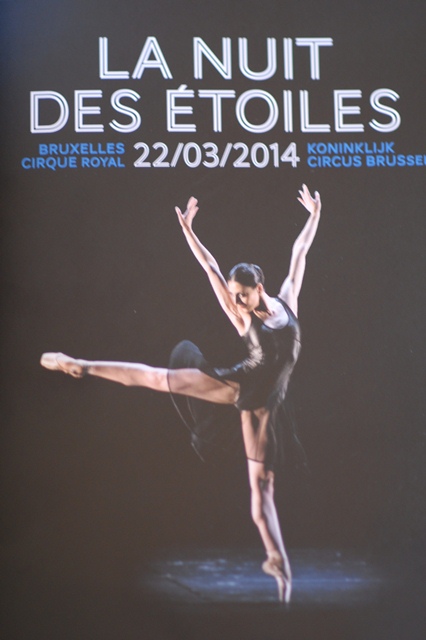 It seems to have been an exceptional selection, referring to his age and career (and even from the viewpoint of his nationality). Kakehashi is one of the students of the Royal Ballet School of Antwerp. Of course, he is not a professional dancer yet, but he was the only dancer from Belgium to appear in that night’s event. He won numerous awards in ballet competitions in Japan where he spent his elementary school years and as soon as he became a junior high school student, he came to Antwerp to study ballet. End of last year, he won the junior grand prix in an international ballet competition held in Brussels, which seems to have led to his appearance in the show that evening. At present, the level of the boys and girls learning ballet in Japan is top-class, even in comparison with children of the same age worldwide. In February this year both the first and second prize at the Ballet Competition of Lausanne were won by Japanese high school students. I have high expectations for Kakehashi’s future performances as a high school student next year. It seems to have been an exceptional selection, referring to his age and career (and even from the viewpoint of his nationality). Kakehashi is one of the students of the Royal Ballet School of Antwerp. Of course, he is not a professional dancer yet, but he was the only dancer from Belgium to appear in that night’s event. He won numerous awards in ballet competitions in Japan where he spent his elementary school years and as soon as he became a junior high school student, he came to Antwerp to study ballet. End of last year, he won the junior grand prix in an international ballet competition held in Brussels, which seems to have led to his appearance in the show that evening. At present, the level of the boys and girls learning ballet in Japan is top-class, even in comparison with children of the same age worldwide. In February this year both the first and second prize at the Ballet Competition of Lausanne were won by Japanese high school students. I have high expectations for Kakehashi’s future performances as a high school student next year.
|

